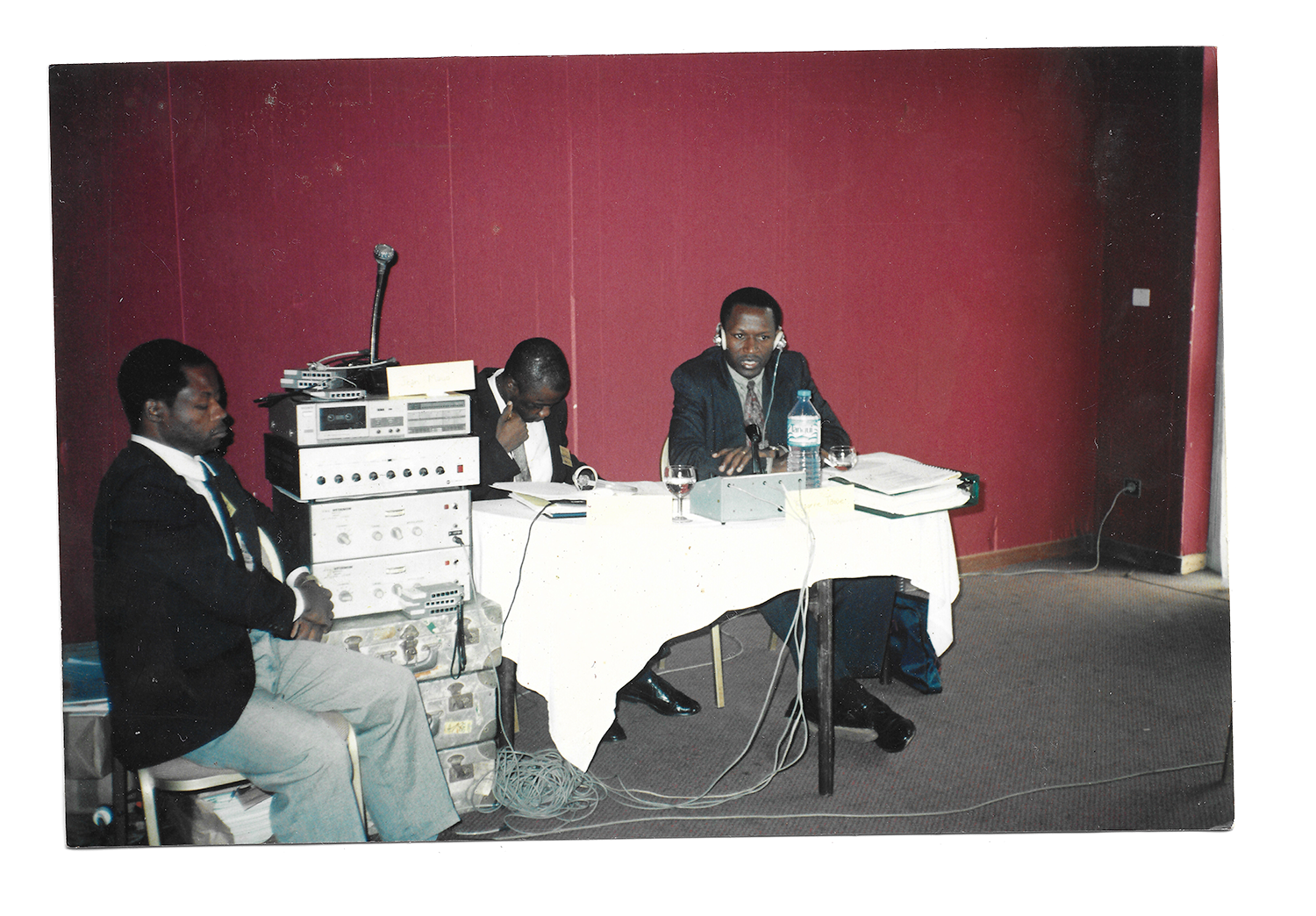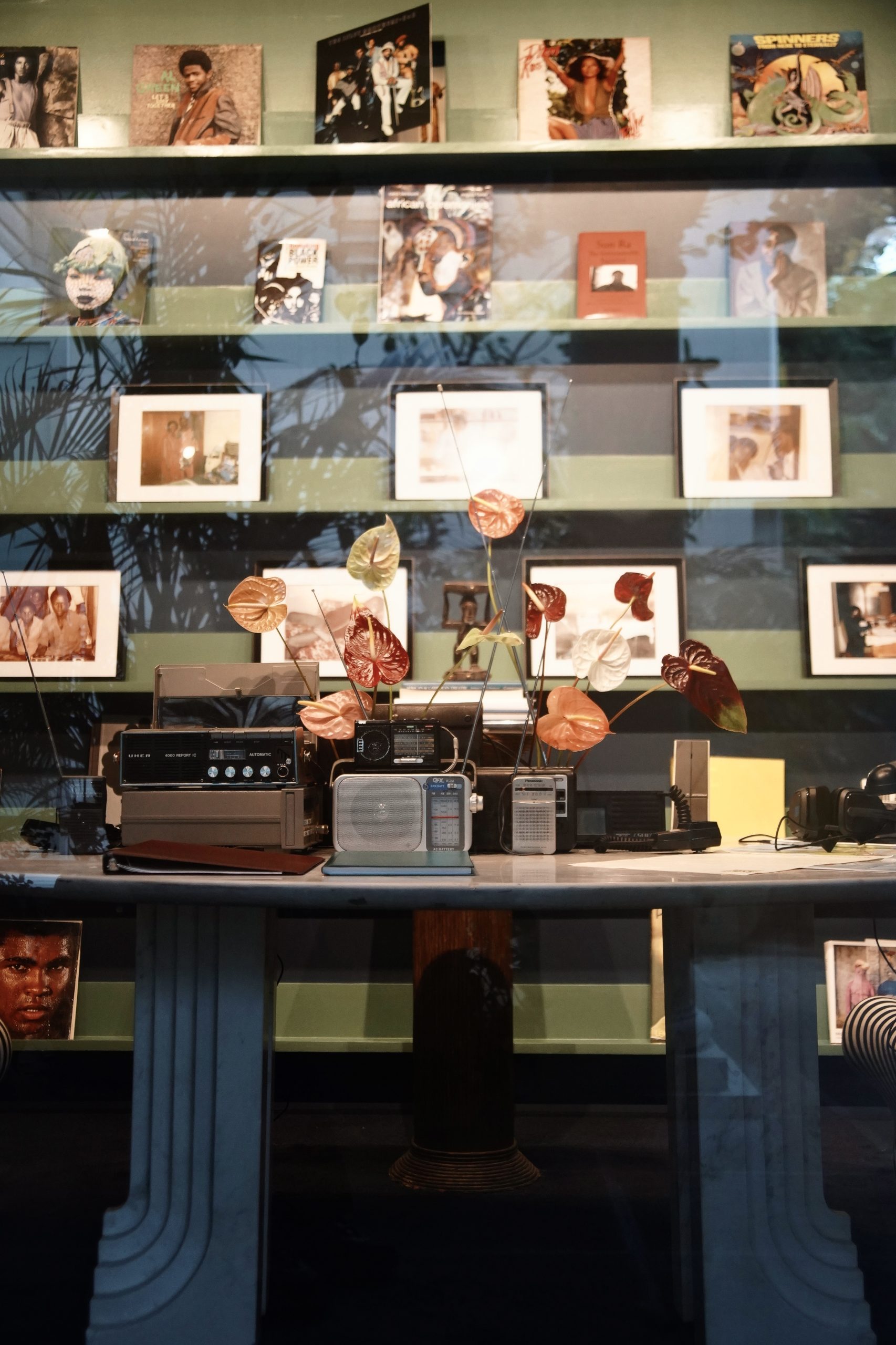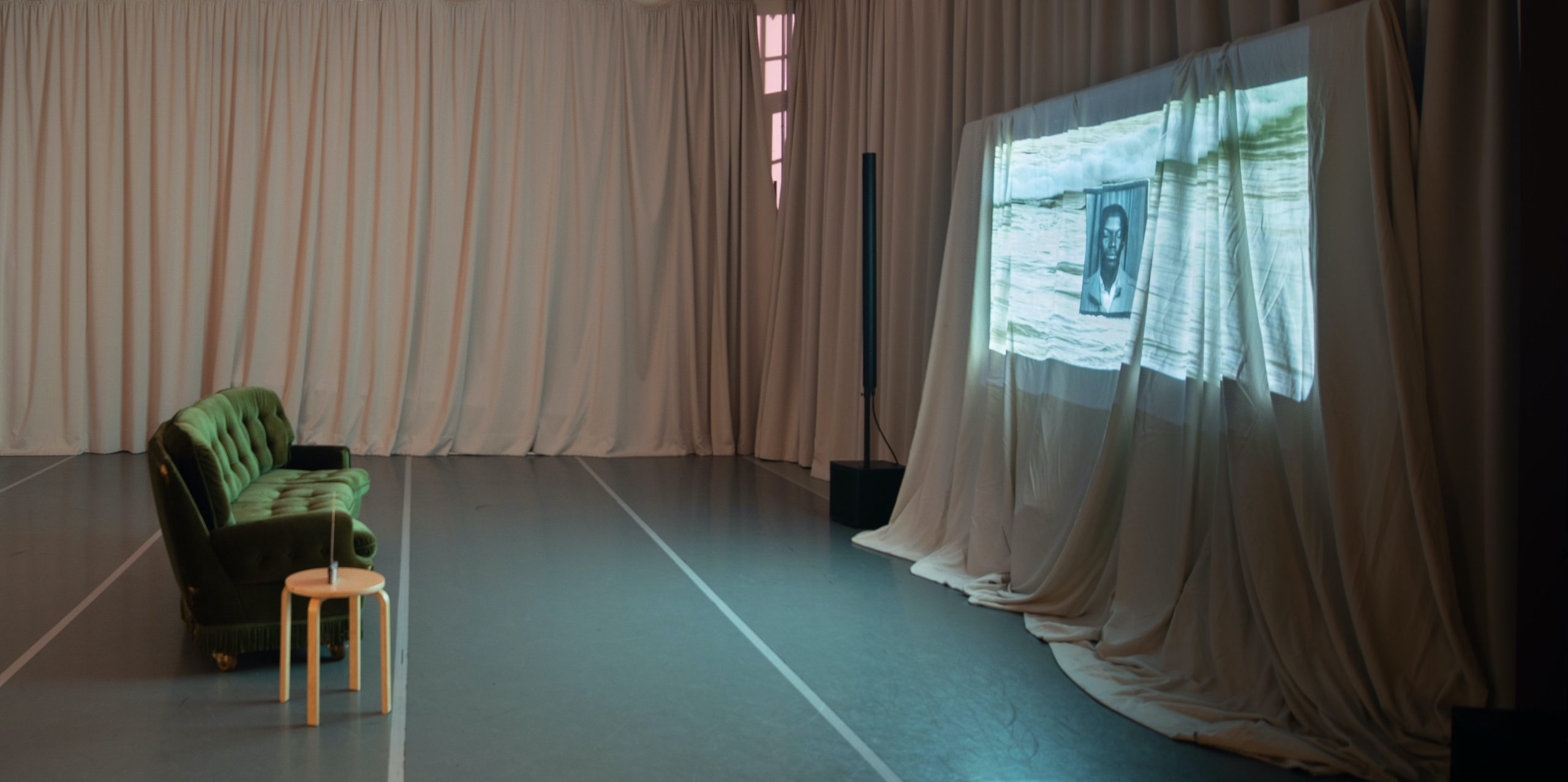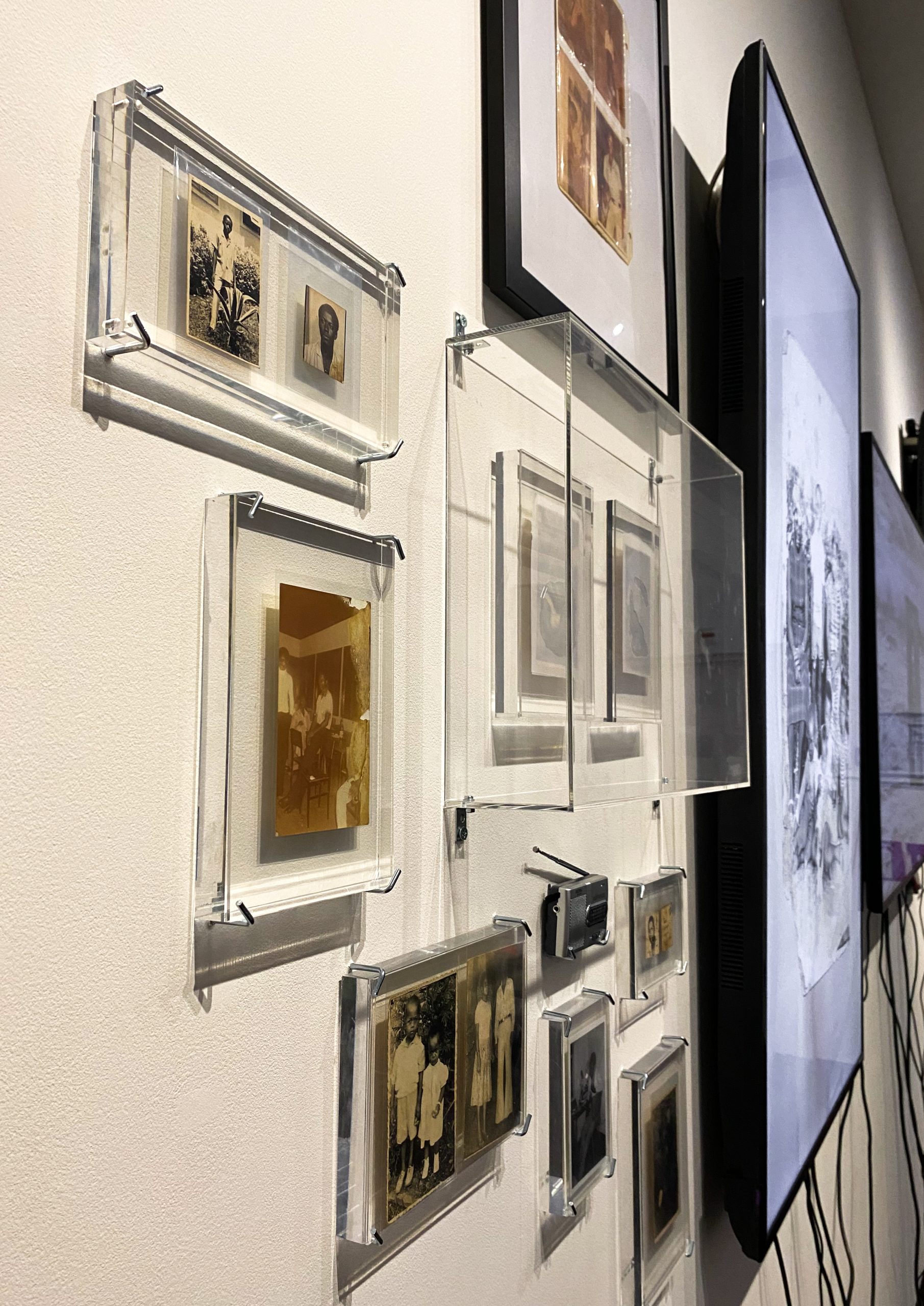“Her curation is like the circularity of a vinyl record, the deep Black recesses in a modulated spiral groove are affective continuums weaving in and out of the mix.”
Justin Smith, founder and curator of Afrovisualism
Prevailing institutional and academic conversations engaging with restitution in art ecologies unfold in a framework rooted in the return or restoration of artefacts looted during colonisation to their places and people of origin.
But what would it mean and what would be affected and impacted if we were to think of restitution or restoration as a process and practice of (re)invention offering counterintuitive possibilities of nuanced, complex and rhizomatic curatorial and artistic modalities. To think of it as an embodied practice of creative (re)invention in calling ourselves back to ourselves outside of dominant institutional frameworks by tapping into our ancestral and creative lineage(s). How can we know, sense, feel, imagine and create different and which sites/sights are repositories we can mine to excavate this?
I think of the multidisciplinary artist, curator and time-traveller, Ethel Tawe’s work and practice as my mind dances through and in between those complicated and complicating questions. In and through her work, Ethel explores “visual and sonic archives, memory, and identity in Africa and its diaspora. Using collage, pigments, words, installation, still and moving images, Tawe examines space and time-based technologies often from a magical realist lens.”
 Ethel Tawe, Image Frequency Modulation, 2022
Ethel Tawe, Image Frequency Modulation, 2022
Image Frequency Modulation (2021) is one such body of work, where Tawe “explores collage and assemblage as a form of history-making. Using her family archive, with her father as a central subject, she juxtaposes analogue and digital photographs with moving image, sonic and sensory play, creating montages that act as both time capsules and portals into ancestral memory.”
Produced in the context of my participation in A4 Arts Foundation’s Curatorial Connective x London Based New Curators, the following conversation is one between myself and Ethel talking/thinking/musing through Image Frequency Modulation as a restorative curatorial and artistic intervention, continually in process.
Lindiwe Mngxitama: You’ve said that with your body of work, Image Frequency Modulation (2021) you “explore collage and assemblage as a form of history-making. Placing [your] father as a central subject, [you] juxtapose analogue and digital photographs with moving image, sonic and sensory play.”
I can’t help but think of the work being done by IMF, especially in relation to — processes of — history-making, as a modality of restitution. Although dominant conversations about restitution in our art world(s) and ecologies tend to focus on the return of African artefacts and objects, I think that Image Frequency Modulation offers alternate ways to think about (re)memory, haptic encounters, the sonic and sensory and intimate photographic archives as places we can turn to excavate disappeared histories, stories and ways of knowing — of being in insurgent relationship with history — like Toni Morrison’s Beloved.
Have you ever thought about IFM from a restorative lens or one that speaks to restitution, if so what would you say is being restored?
Ethel Tawe: I often think about the gap in some restitution discourse, where the focus is more on the past than the future. Although we of course understand that restoring these artefacts is essential for a self-determined future, what does that future actually look like? I think Black artists often offer a counter-image of our restored material culture through modes of critical fabulation and remix; making use of the fragments we have at hand.
I like to think of Image Frequency Modulation as a future archive and a memory exercise. To bend time in a way that sees these moments and mementoes existing and unravelling in tandem is of course in itself a reclamation/restoration of indigenous African time. I am interested in restoring both the physical and metaphysical, restoring (or rather reactivating) our embodied memories. Toni Morrison talks about the trauma that can never be forgotten, that trauma itself being the trauma of forgetting caused by the rupture and displacement of the African diaspora. I’m attempting to restore lost memory and resist that forgetting.

Photograph of Ethel Tawe, Image Frequency Modulation, 2022 by Wami Aluko. Installation at Library Fetish, Palm Heights.
Lindiwe Mngxitama: In Listening to Images — the work that formed some of the inspiration to Image Frequency Modulation — Tina Campt writes, “How do you quantify losses of this magnitude, that move beyond the space of the material?”
Historical losses, I would say, have material, spiritual, cultural and affective implications. If we think about what is being restored with IFM as an unquantifiable loss, what does this mean for the work’s relationship with temporality and with Black Futurity?
Ethel Tawe: According to Campt, “the grammar of black feminist futurity is a performance of a future that hasn’t yet happened but must.” IFM is bridging these temporalities within the present moment. I am interested in tapping into the affective: in other words the ability to affect or be affected. In her book Image Matters, Tina Campt writes that effect is “what makes feelings feel… [and] photographs are objects that catalyse affect and make affect register.” Saidiya Hartman’s Venus in Two Acts also states: “Loss gives rise to longing, and in these circumstances, it would not be far-fetched to consider stories [or images] as a form of compensation or even as reparations, perhaps the only kind we will ever receive.”
The stories catalysed, unveiled, and revisited by images exist in multiple temporalities in relation to how the images are circulated and each moment of encounter. IFM was born out of loss and longing, examining the potential that lies between the interior and exterior, private and public, as a space for healing. In the first iteration, I chose proverb recitals in my mother tongue as a sonic thread for their ability to recall ancestral wisdom and guidance. The act of transmission (learning these proverbs from my father) relinks broken threads through the sonic, and reactivates objects in our homespace as sites of memory. The use of still/moving images in the montage, animated by sound, aims to transmit new im/material signals into the future. Something less fragile in its material technology — digital — but more fragile in its affective registers.
Lindiwe Mngxitama: There is something you said that I came across while reading and researching in preparation for my presentation that really stuck with me. You say:
As we learn to pay attention to the nuances of cultures far and wide, I believe we are able to tap into a transgenerational collective memory and find resonance across cultures. This requires us to reimagine memory not as something situated in the past, but as an active reinvention and recalling with each life’s breath. For me, this is the power of image as memory.
A lot of my own academic work has been rooted in the space of (re)memory and memory studies, I think of (re)memory as a transgressive site of creative intervention. I also think that we remember in different ways — through our bodies, through sight and sound, taste and touch and and and — how did you inhabit and position yourself in the space of memory while making Image Frequency Modulation?
Ethel Tawe: I really like this idea you propose of ‘transgression’, of defying capital ‘H’ Histories, and retrieving from our interior, our collective memory. Whether that’s encoded in our DNA or carried on our nervous systems across the Atlantic like artist Arthur Jafa often says.
The idea of ‘image as memory’ recognises that the making of an image is an inscription in time and in fact, encompasses time itself. It is also part of my intuitive practice of ‘listening to images’, as motivated by the work of Campt amongst other culture custodians whom I learn from and with.
With IFM, the installations then become important points of retrieval, activated through various sensory inputs. One of many definitions of ‘frequency’ is a temporal interval, recurrence, or looping, with the second iteration further investigating how long-term memory actually works.

Photograph of Ethel Tawe, Image Frequency Modulation, 2022 by Dirk Rose at PACT Zollverein.
Lindiwe Mngxitama: There’s a playlist component to the work, how did you go about curating it and choosing the songs — was that also an intuitive process or did it unfold differently?
Ethel Tawe: Sound and music have become a central part of IFM, especially when investigating ideas around frequencies and signals; in both a literal and abstract sense. While this project is artistic, it is also heavily curatorial. Striking the balance of ‘intention’ and ‘intuition’ has been a guiding framework with every curation.
For the playlist, I wanted to create a sonic journey through my influences, charting across the diaspora, reflecting central concepts around radio frequencies and the Black Atlantic (ocean waves). I included electronic sounds with mythological undertones like Drexciya’s “Cascading Celestial Giants”, besides an acapella Yoruba chant sung by Afrocuban twin sisters Ibeyi.
As the playlist continues to grow with the development of the ongoing second iteration, I’m also tapping my small team for input including Justin Smith of Afrovisualism, who is a producer/sonic curator for the radio program/podcast. Once an intentional foundation has been laid it is often intuitive from there.
This story is produced in the context of an editorial residency supported by Pro Helvetia Johannesburg, the Swiss Arts Council.

Ethel Tawe, Image Frequency Modulation, 2021

Photograph of Ethel Tawe, Image Frequency Modulation, 2022 by Wami Aluko. Installation at Library Fetish, Palm Heights.



















































